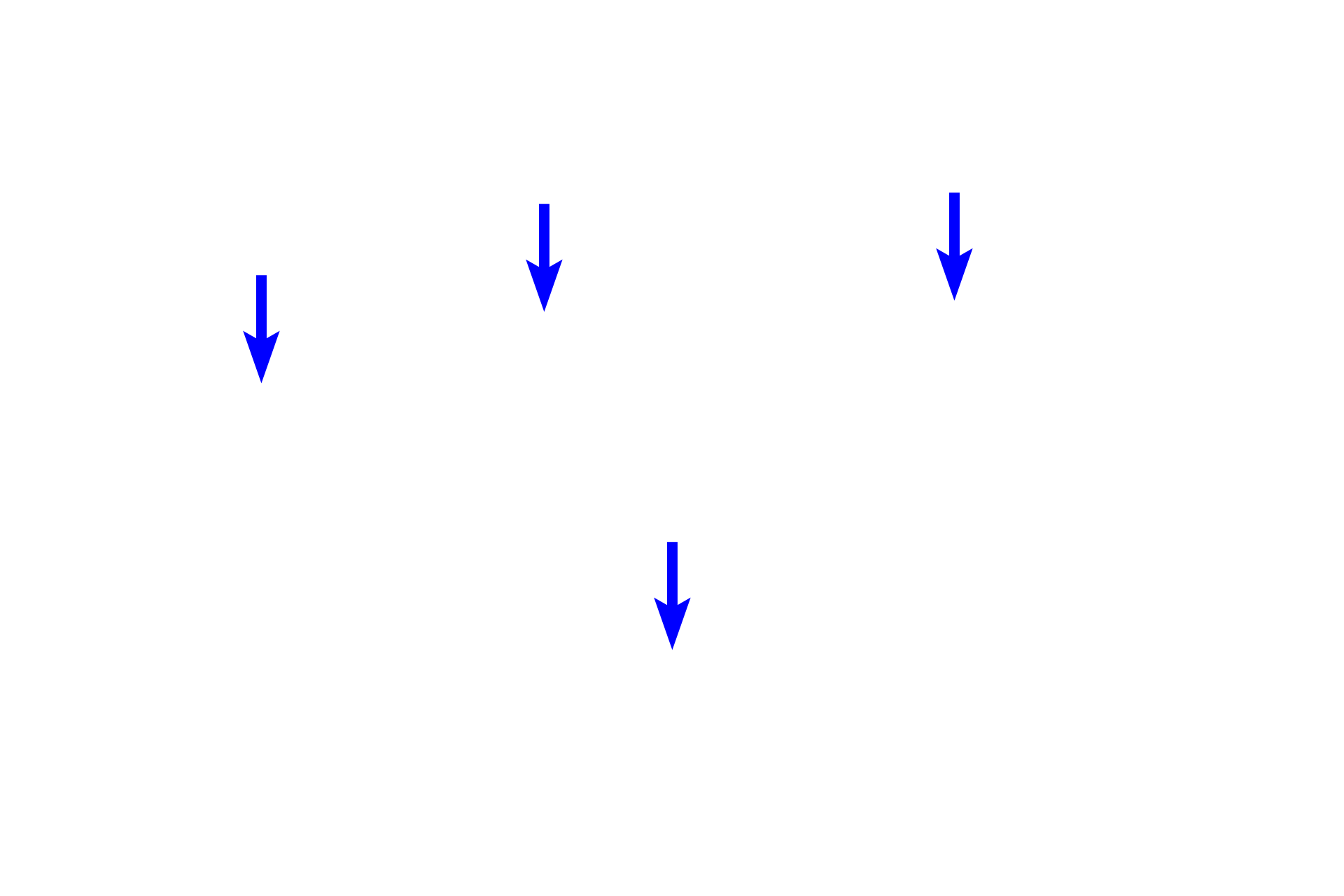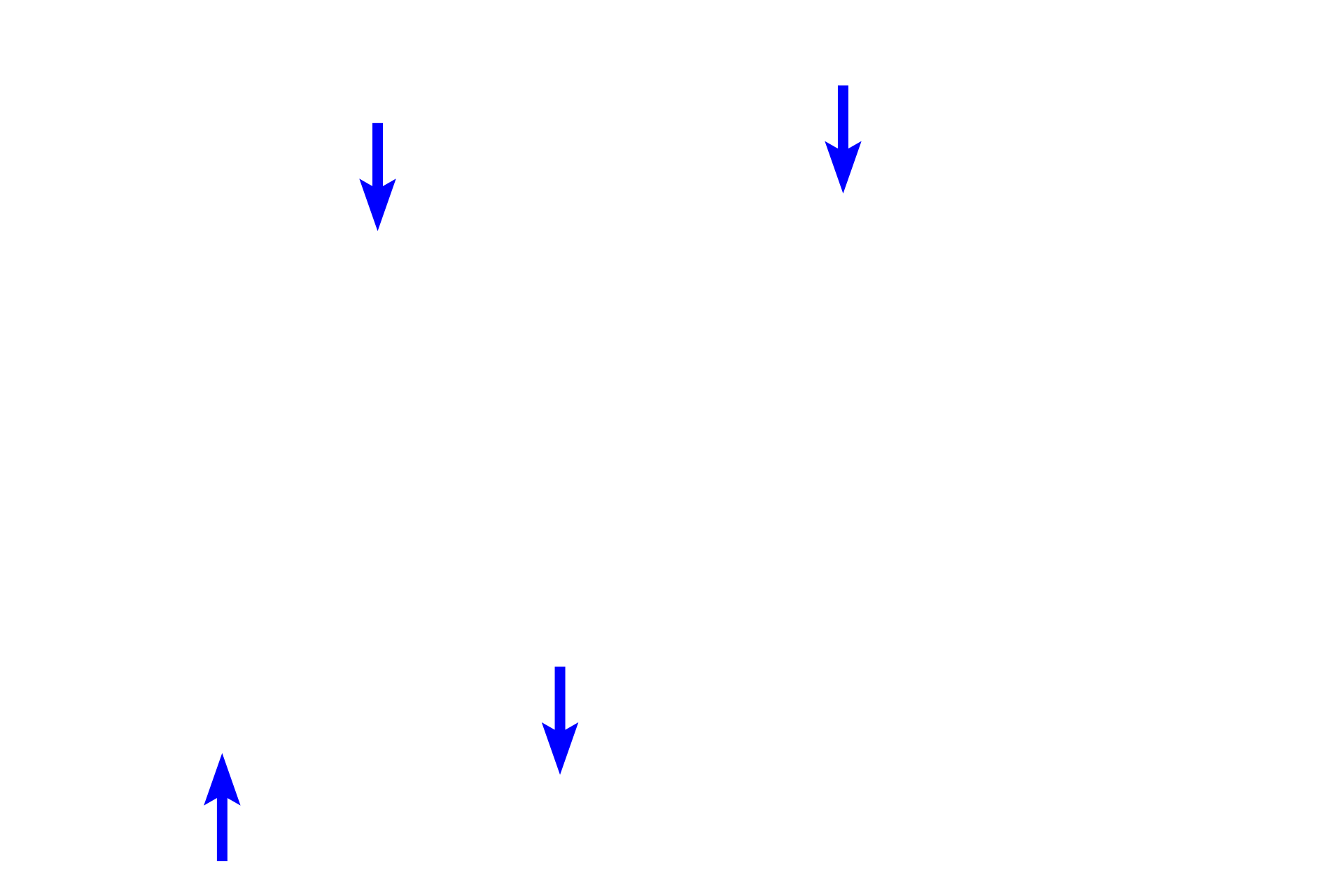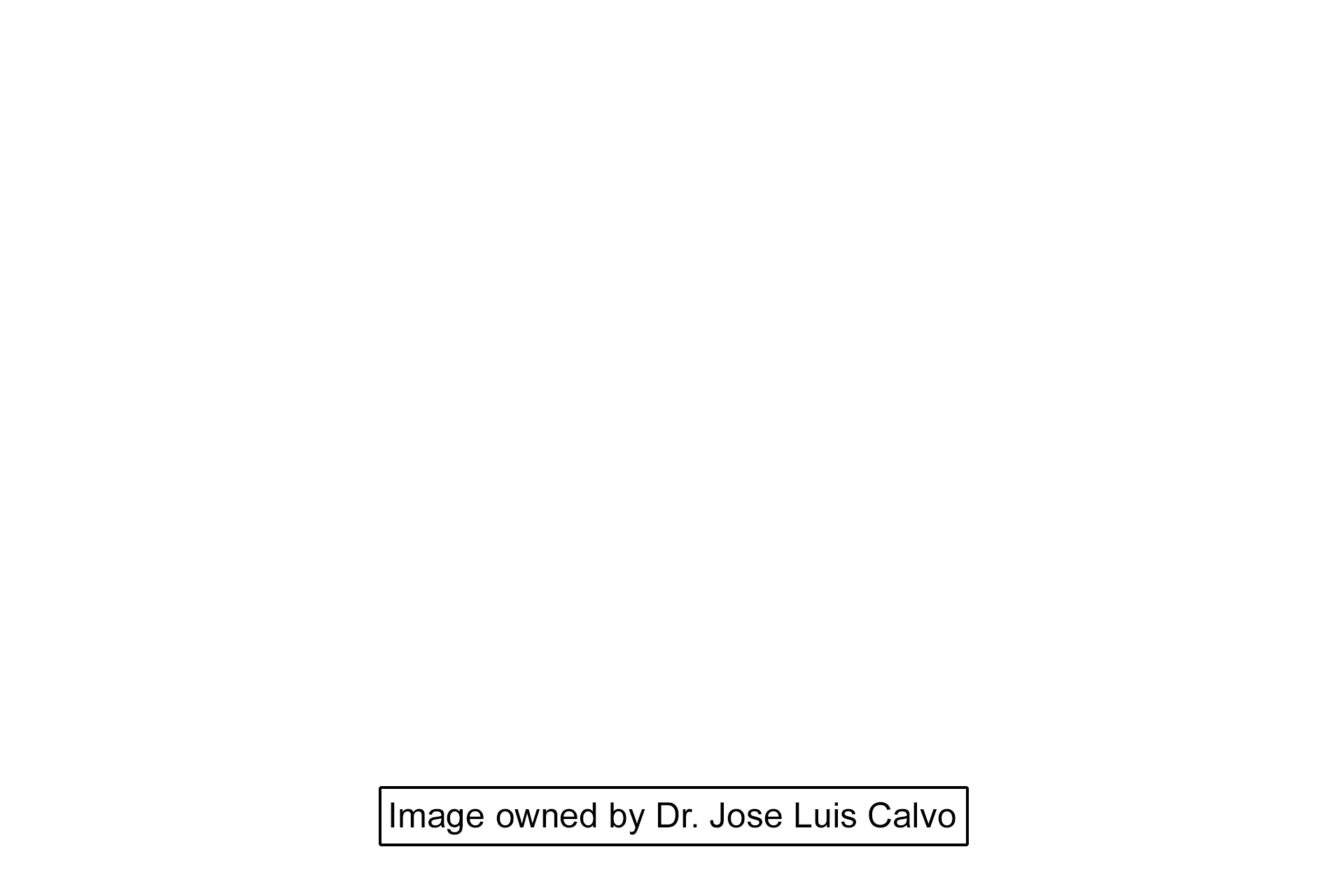
Pseudounipolar neuron
The unique shape of sensory, pseudounipolar neurons is demonstrated in this silver-stained section. A single stem process emerges from the spherical cell body and eventually branches into central and peripheral axons. This bifurcation is not visible here however the silver stain does reveal the twisted course of the stem process as it leaves the cell body. This region is called the initial glomerulus of Cajal. No dendrites originate from the cell body. Silver stain, 600x

Pseudounipolar neurons
The unique shape of sensory, pseudounipolar neurons is demonstrated in this silver-stained section. A single stem process emerges from the spherical cell body and eventually branches into central and peripheral axons. This bifurcation is not visible here however the silver stain does reveal the twisted course of the stem process as it leaves the cell body. This region is called the initial glomerulus of Cajal. No dendrites originate from the cell body. Silver stain, 600x

Emerging stem process
The unique shape of sensory, pseudounipolar neurons is demonstrated in this silver-stained section. A single stem process emerges from the spherical cell body and eventually branches into central and peripheral axons. This bifurcation is not visible here however the silver stain does reveal the twisted course of the stem process as it leaves the cell body. This region is called the initial glomerulus of Cajal. No dendrites originate from the cell body. Silver stain, 600x

Glomerulus
The unique shape of sensory, pseudounipolar neurons is demonstrated in this silver-stained section. A single stem process emerges from the spherical cell body and eventually branches into central and peripheral axons. This bifurcation is not visible here however the silver stain does reveal the twisted course of the stem process as it leaves the cell body. This region is called the initial glomerulus of Cajal. No dendrites originate from the cell body. Silver stain, 600x

Axons
The unique shape of sensory, pseudounipolar neurons is demonstrated in this silver-stained section. A single stem process emerges from the spherical cell body and eventually branches into central and peripheral axons. This bifurcation is not visible here however the silver stain does reveal the twisted course of the stem process as it leaves the cell body. This region is called the initial glomerulus of Cajal. No dendrites originate from the cell body. Silver stain, 600x

Image source >
This image is owned by Dr. Jose Luis Calvo and is used under a royalty-free agreement.
 PREVIOUS
PREVIOUS